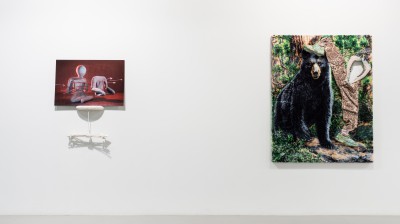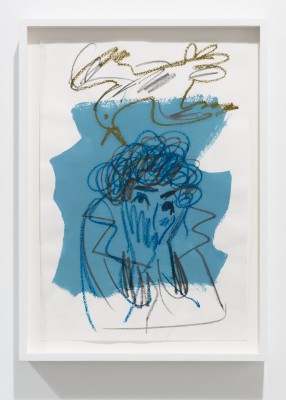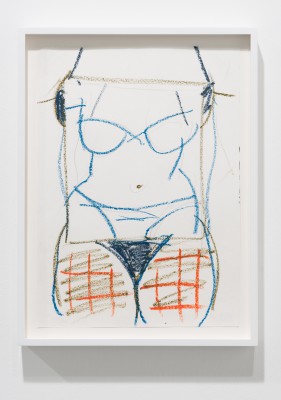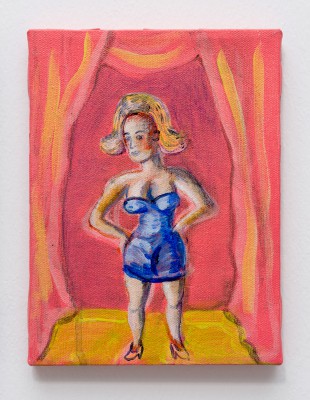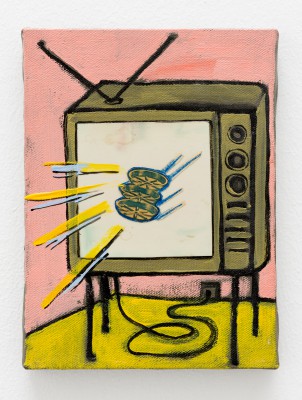"Any body suspended in space will remain in space until made aware of its situation", curated by Margot Samel, 15 February – 14 April 2018

Artists: Rhys Coren, Jonathan Ehrenberg, Ella Kruglyanskaya, Kris Lemsalu, Priit Pärn, Emily Mae Smith and Ken Tisa
Beginning with the Futurists and Dadaists in the early 20th century, the limitless elasticity of cartoon physics’ pointed social criticism has been employed by multiple generations of artists and is still obtusely relevant today. Any body suspended in space will remain in space until made aware of its situation explores the language of animation and cartoon as they relate to identity politics conceived by contemporary artists spanning movement and media.
Cartoons make the representational abstract, or the abstract representational. In Rabelais and His World, Mikhail Bakhtin sees the carnivalesque (with its laughter and chaos) as a potentially revolutionary tactic for subversion and liberation in medieval and Renaissance Europe. The carnival encourages the notion of transformation in society by acting as a site where fantasy and reality merge. Identity is obscured, performed through mask and costume, creating a world that is upside-down in terms of social hierarchy. Similar to the carnivalesque, cartoons also embody the desire to represent an upside-down world, often using humor to ‘sugar coat’ a serious message.
Rhys Coren, Jonathan Ehrenberg, Ella Kruglyanskaya, Kris Lemsalu, Priit Pärn, Emily Mae Smith, and Ken Tisa develop new vocabularies set inside a universe of transformation. Some works give life by means of process or character. Others rationalize form and attitude through color, creating considered images supplemented by the language of their own title, simulating the analytical relationship between cartoon and caption. The role of animation is introspective and unmasking of both cultural and social construct. This exhibition explores the denial of traditional modes of reproduction, absurdity as it is governed by its own narrative, and humor used as a tool for protest – a device to access the polarizing.
In June of 1980, Mark O’Donnell's Laws of Cartoon Motion appeared in Esquire and defined the cartoon physics that supersede normal laws. Taken from O’Donnell’s article, the title of the show depicts how (according to the physics of a cartoon) characters can walk off the edge of a cliff and still remain suspended in midair, until they look down. It is only when the characters are made aware of their situation that the regular laws of gravity resume.

